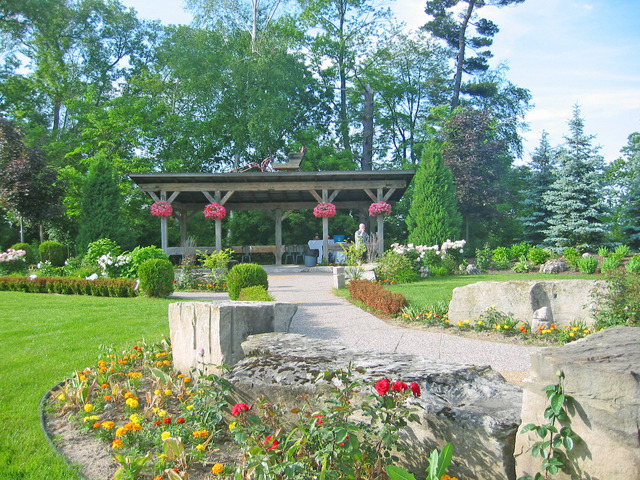When strolling through Roberto Burle Marx: Brazilian Modernist at the Jewish Museum in New York City, one might hear a soft hurrying of waves, blended with the whispering of an al fresco crowd. A narrative in Portuguese, both spoken and sung, will wander breezily in and out. This is a 2001 video by artist Dominique Gonzalez-Foerster, the soundscape of Plages. Shot from an aerial perspective above Copacabana Beach, the movie reveals the popular Rio de Janeiro waterside, not in its typical sunlit elegance but in the synthetically lit nocturne of New Year’s Eve 2000. Celebrators bristle in the area in between city and ocean, between one year and the next, moving in vibrant patterns amongst the styles set out by Roberto Burle Marx.
For nearly half a century, Copacabana Beach’s huge sweeps of mosaics have animated the Rio waterside. Plages, nevertheless, exposes little of its renowned setting or its retaining walls. Just looks of the seductive lines slipping up and down the boardwalk are photographed. Yet its ambient soundtrack includes much to this latest appraisal of Copacabana’s designer. Gonzalez-Foerster’s video is amongst the handful of works on display that are not authored by Burle Marx; these more modern additions stand in as interpretations of exactly what the program recognizably can not make  present– the gardens and landscapes themselves. In an exhibit occupied with figural and abstract paintings, intense, polychromatic strategies, and sculptural maquettes, it is simple to lose sense of the product that Burle Marx, through numerous commissioned works, so successfully mastered: outdoor amongst the frequent renovations and hot water service repairs – and often public – area. The white noise of Plages brings back a few of the spatial dimension that escapes the graphics and designs that frequently represent Burle Marx’s oeuvre.
present– the gardens and landscapes themselves. In an exhibit occupied with figural and abstract paintings, intense, polychromatic strategies, and sculptural maquettes, it is simple to lose sense of the product that Burle Marx, through numerous commissioned works, so successfully mastered: outdoor amongst the frequent renovations and hot water service repairs – and often public – area. The white noise of Plages brings back a few of the spatial dimension that escapes the graphics and designs that frequently represent Burle Marx’s oeuvre.
A variety of these exceptionally colored strategies, animated sketches, and scale designs have been paraded out into the museum’s first-floor galleries. Joining them are lots of Burle Marx-designed items without any direct relation to landscapes or gardens. The biggest is a tapestry for the Santo André Civic Center, a woolly mural of various colored, multi-textured shapes and marks that cover the width of the main space between the commercial plumbing services. The tiniest: 2 shining teardrops of tourmaline, set into gold earrings. This diverse series of objects have made the exhibit a rather unmatched homage. Particularly, it is the very first show in the United States to analyze the full scope of Burle Marx’s cultural contributions, from the sketches and canvases he made while painting in his 20s to the blown-glass sculptures he produced as an accomplished designer, infiltrating his 80s.
Range therefore turns into one of the more apparent messages provided through the items collected in the hall. In their effort to influence a new age of interest in Burle Marx, managers Jens Hoffmann and Claudia J. Nahson looked for to represent their subject as far more than the peerless paving and landscape contractor transforming Latin American style together with clear-thinking innovators like Lúcio Costa and Oscar Niemeyer. As the title of the exhibit suggests, Burle Marx might be more fittingly thought about as a complex “modernist,” a private whose readiness to use himself to a range of tasks allowed him to think of and genuinely embody the contemporary (whatever that might imply). A significant claim of the program is that Burle Marx’s broadened creative practice was essential, instead of incidental, to his developments in landscape style.
As the initial wall text acknowledges straightaway, Burle Marx remains a partially familiar cultural figure beyond Brazil. Regardless of having actually left a portfolio rupturing with works – his most famous finished commission in the United States being Miami’s huge, mosaic-embedded Biscayne Boulevard – and in spite of regularly appearing in the ever-expanding literature on Latin American Modernist architecture, Burle Marx has not yet drawn in the sort of criticism and scruitny of agenda (or ego) that generally accumulates to midcentury figures of such impact. This most current exhibit for that reason deals with a fascinating issue: Can an audience unfamiliar with Burle Marx avoid the circumscribed assessment of his style practice and merely value the plurality of his creative pursuits?
